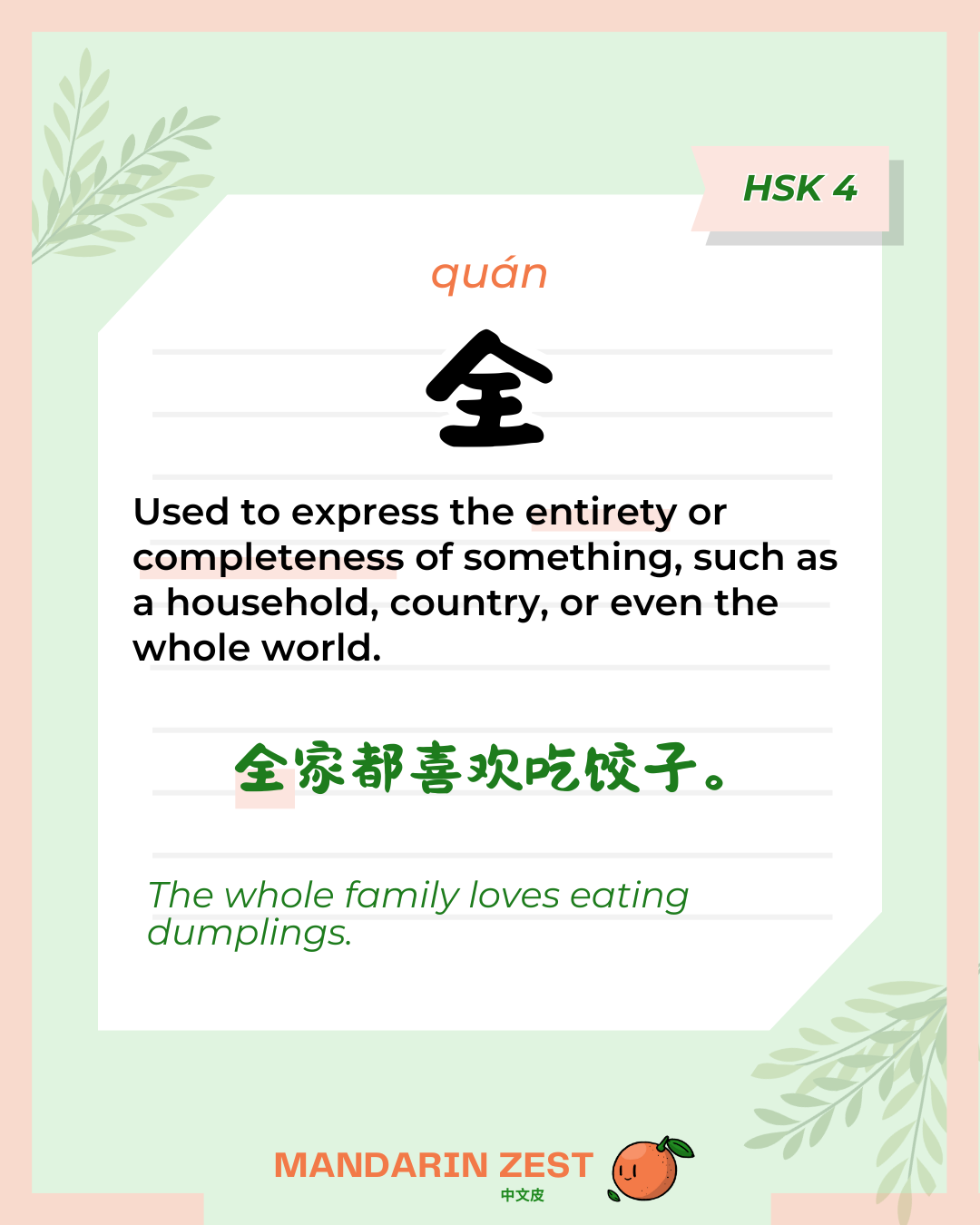The character 全 (quán) is used to express the entirety or completeness of something, such as a household, country, or even the whole world. It's commonly translated as "the whole" or "entire."
The structure follows this pattern:
全 + Noun + 都 + Predicate
全 is placed before the noun to emphasize the entirety of the subject.
都 is often added after the noun to further stress inclusivity.
The predicate can be a verb or an adjective.
Sample Sentences
全家都喜欢吃饺子。The whole family loves eating dumplings.
全世界都知道这件事。The whole world knows about this.
全身都很痛。The whole body hurts.
In a Text
昨天下午,我和朋友们去了动物园。那里很大,全园都是各种各样的动物。有可爱的熊猫、活泼的猴子和凶猛的老虎。我们玩了一整天,全身都累得不得了。回家的时候,全家人都觉得今天真是太开心了。
活泼 (huó pō): lively
凶猛 (xiōng měng): fierce
Yesterday afternoon, my friends and I went to the zoo. It was very big, and the whole park was filled with all kinds of animals. There were adorable pandas, lively monkeys, and fierce tigers. We played the whole day, and our entire bodies were utterly exhausted. On the way home, the whole family agreed that today was truly wonderful.






